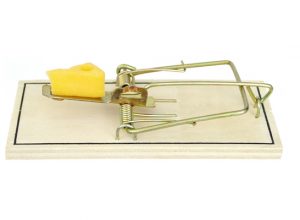
The Acquisition Trap
What happens when most companies purchase or develop software for solving their spare parts inventory management problems? Typically, they will spend a lot of time, energy and money trying to integrate their purchase into their existing systems but ultimately, over time, they will make little or no measurable progress.
This is not necessarily the fault of the software; it is more likely a result of The Acquisition Trap.
One of the people whose articles I read on a regular basis is Bill Barnett, Professor of Business Leadership at Stanford University. Recently Professor Barnett wrote an article on The Acquisition Trap and while he was referring to business strategy I believe that the principles are applicable to spare parts management. Here how.
A Way to Avoid Learning?
When companies decide to purchase (or acquire) a software ‘solution’ they are expressing the view that their current systems and know-how can’t solve their problem. Otherwise why would they spend the money? Thus they believe that they can buy a solution rather than learn how to better manage the situation. Barnett calls this the ‘learn or buy’ decision and says that ‘paying for this is a way to avoid learning’.
The problem is that the purchase does not make the company learn, it just means that they have a new tool. While they may learn to use the tool in a functional way, this does not mean that they learn how to use the tool in the context of the rest of their systems and culture. And this is The Acquisition Trap.
It gets worse.
Assumptions Vs. Reality
Typically, the tool will be designed with a range of assumptions relating to issues like the available data or the existing know how of the team or culture in which the tool will be used. However, the purchasing company then controls the implementation and subsequent use of the tool and they will most likely operate with a completely different reality. And hence the tool does not ultimately deliver on expectations.
Now I can almost hear the outrage from every vendor reading this and everyone who has successfully implemented a new tool or software solution. But Barnett cautions us on cherry-picking on success stories reminding us that if sampling on success worked then we would all be playing slot machines.
How to Get Back on Track
My clients are typically large engineering-based companies in areas such as Oil & Gas, Mining, Manufacturing, Process Industries and so on and I can say with absolute certainty that they all have invested at some point on a new ERP system or some ‘slice and dice’ type of optimization software. Only after realizing that, with spare parts management, there is no substitute for real know-how do they then call me and, through a process of training and revised execution, I get them back on track. You can see a range of related case studies here.
Barnett closes out his article with this warning: ‘there is no substitute for learning by doing’. To paraphrase him further. If you are purchasing software to learn what it knows then you are stepping into the trap.